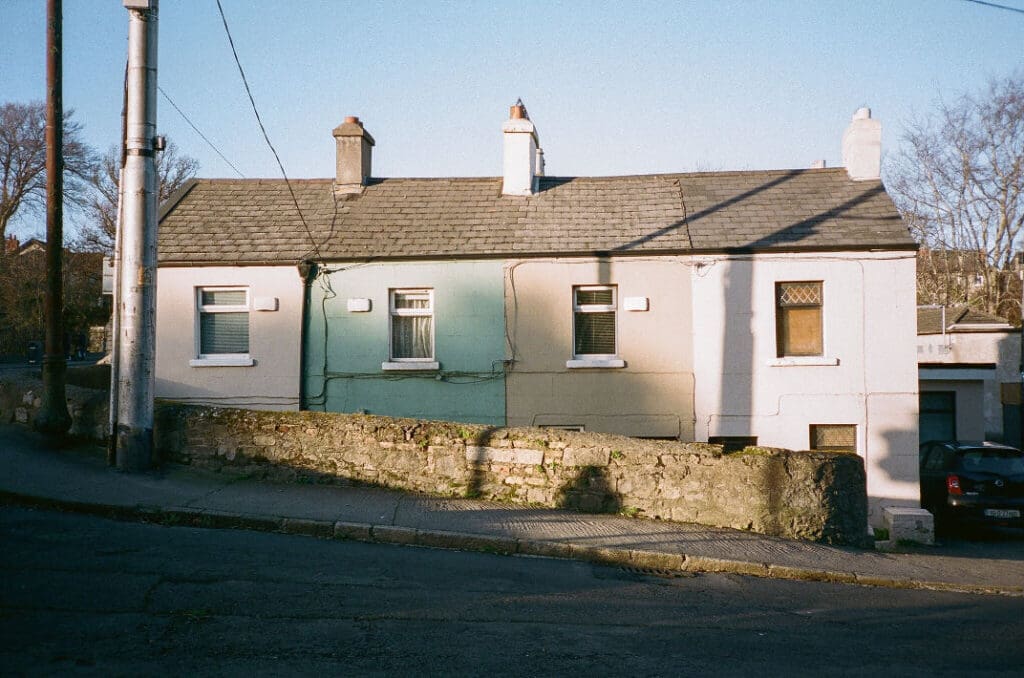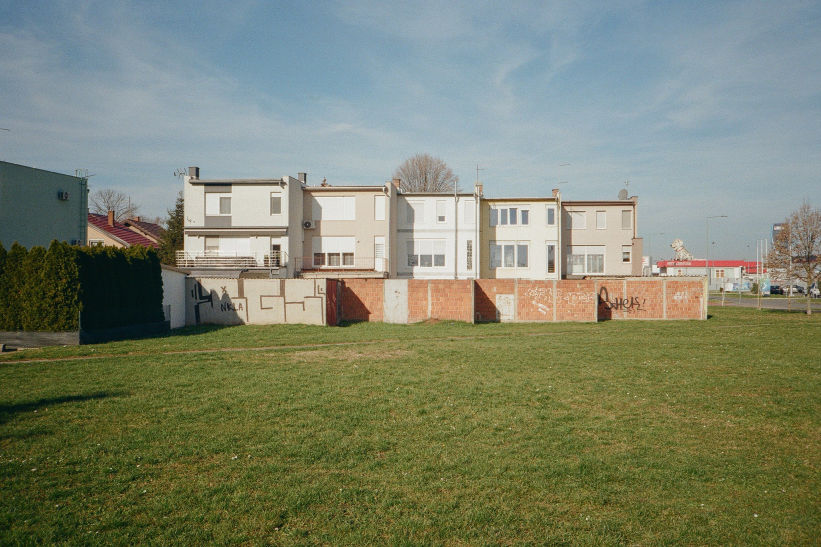When you lay your eyes on this sleek Nikon L35AF design, what flashes through your mind? An 80s car, VHS tapes, or maybe even a cassette player? Well, buckle up because you’re not far off the mark. Whenever I lock eyes with this camera, boom, the Miami Vice theme, Crockett’s Theme, starts playing in my head.
Alright, let’s dish about Nikon – the unsung champ in this camera category. Back in ’83, Nikon dropped its first autofocus compact camera, the Nikon L35AF. Picture this: early models rocking speeds from 50 to 400 ISO, but later editions? Oh, they kicked it up a notch to 1000 ISO. And guess what’s hotter than a Miami summer? Yup, you guessed it – the 1000 ISO version in today’s market. It’s like finding a golden ticket! Well, even Kevin from ‘Home Alone’ had this camera, so why shouldn’t you?
But hold up, before I spill the beans on my honest review, let’s take a time-travel detour down memory lane, shall we?

Affiliate Disclosure: As an Amazon Associate I earn from qualifying purchases. Purchasing via provided links/banners comes at no additional cost to you. Analog Dayz only recommends products and/or services that are insightful and helpful to readers. For more info please read our Affiliate Disclaimer.
Nikon L35AF: A Journey Through Time
Alright, let’s dive into Nikon’s game-changer – the OG compact 35mm film camera with autofocus. Picture this: it hit the shelves in 1983, right when Nikon’s rivals were making waves with their point-and-shoot marvels.
Now, Nikon’s bread and butter? Single-lens reflex (SLR) cameras. But hey, they weren’t about to let the competition steal the spotlight. So what do they do? They drop their point-and-shoot gem, riding the wave of this new camera craze that’s got everyone buzzing. And let me tell you, it’s like adding rocket fuel to the industry!
They called it the L35AF, but in Japanese, it’s known as ‘Pikaichi’ – which translates to “top-notch.” And oh boy, was it living up to that name! With its rugged build and killer specs, this bad boy was an instant hit.
Fast forward, it’s become the Holy Grail for camera collectors – a cult classic, if you will. Then comes the L35AD version, boasting an “autodate” feature, because who doesn’t love a camera that can keep track of time, am I right? And just when you thought it couldn’t get any cooler, along comes the Nikon L35AF2 in ’85, sporting a lens designed by the one and only Koichi Wakamiya, giving the Sonnar formula a fresh twist.
I mean, talk about a journey from zero to hero!

Recipe for disaster
Nikon’s L35AF is simple at its finest – perfect for both seasoned pros and newcomers alike. But before you hit that shutter button, let’s add some flair to your setup with these essential checks and tips:
- Peek through the viewfinder and lens – no fog or fungus, please!
- Give the exterior and lens a once-over for scratches or damages.
- Pop in those double AAs and ensure that the battery door snaps shut like a boss.
- Crack open the back door with finesse and inspect for any hidden damage.
- Power up the camera and listen for that satisfying shutter click – music to your ears!
- Is flash and self-timer on point? Check!
- Keep an eye on that needle inside the viewfinder – it should be dancing.
- Load up the film, seal the deal with the back door, and fire off a shot to ensure smooth sailing.
- Watch as the counter goes from “S” to “1” – we’re in business!
- And when the film’s all used up, make sure that the rewind button’s spinning like a pro.
With these slick moves, you’re ready to rock the Nikon L35AF like a true photography boss!

How to use Nikon L35AF
After ensuring everything’s shipshape with the pre-check, let’s dive into mastering your Nikon L35AF like a pro! This bad boy runs on double AA batteries, a breeze to find anywhere. Slam that battery door shut, flick the dial from OFF to ON, and bask in the symphony of readiness. Remember, without juice, it’s just a stylish paperweight.
Pro tip: Frequent flash fiends, stock up on AAs!
Once powered up, crack open the backdoor with the finesse of a safecracker. Slot in your 35 mm film, yank that leader to the index mark area, and you’re golden. You can change ISO settings from 50 to 1000 to satisfy your creative urge. Load that film, face your lens, and twist that ISO circle to your heart’s content. Beginners, stick to the box speed for smooth sailing.
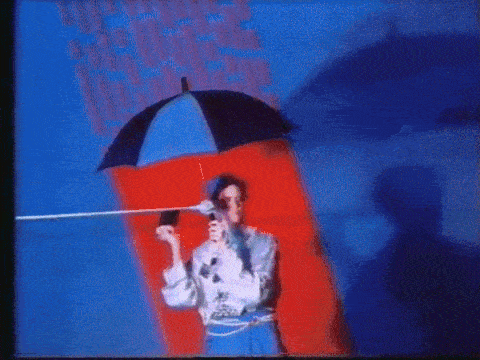
46 mm filter? Check. Metering through the filter? Check. Say hello to hassle-free photography. I’m all about that Tiffen Black Pro-Mist 1/4 with the step-up rings. It’s like magic for your shots. This camera’s got a flash game for days. Pop-up and indicator light? Ready for action. Need flash in daylight? Just cover the lens and watch the magic unfold.
Shooting with a bright background? Backlight compensation’s got your back. Hold that lever, frame your shot, and let the camera work its magic. Need to nail focus outside the frame? Cue the focus lock! Center, half-press, recompose, and shoot. Easy-peasy, just don’t go movin’ around. Group shots or solo snaps, the self-timer’s got you covered. Pull that lever, wait for the beep, and strike a pose!
For more photographic hijinks, check out the full manual here. Thank you, Mr. Butkus!
Photo samples

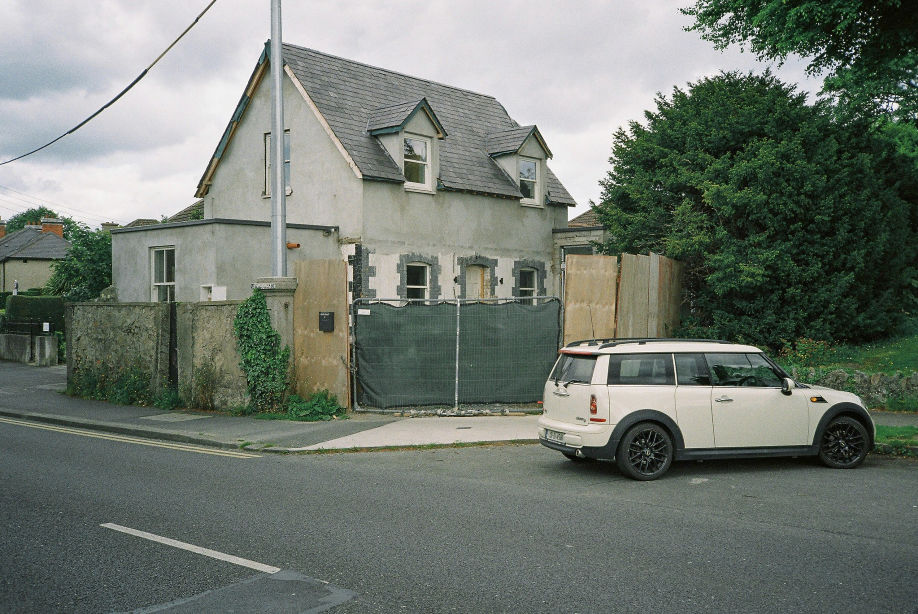
Nikon L35AF: The Good and The Not-So-Good
Pros:
- Robust design ensures durability and longevity.
- The high-quality lens produces sharp and clear images.
- Wide ISO/ASA range from 50 to 1000 offers versatility in various lighting conditions.
- Tripod mount facilitates stable shots in low-light environments.
- The backlight compensation feature helps to balance exposure in challenging lighting situations.
- Produces excellent images in daylight
- Lens filter thread enables creative effects with different filters.
- The self-timer function adds convenience for group shots or self-portraits.
- Ideal for beginners due to its user-friendly interface and features.

Cons:
- Primitive autofocus systems may struggle in low-light or complex scenes.
- Higher price range ($250-$350) compared to some alternatives.
- Battery door design could be more secure and prone to damage.
- The sound of the shutter release button may be louder than desired, and it may occasionally get stuck.
- The camera’s size may be too large to comfortably fit in a pocket for some users.
What films should I use?
The Nikon L35AF exclusively accommodates 35 mm films, and fortunately, this format continues to enjoy widespread production. With the recent resurgence in analog photography, the future of film remains bright.
Here are my top picks for films to pair with this camera:
- Kodak Portra 160: Renowned for its fine grain and natural colors, Portra 160 delivers stunning results, perfect for capturing portraits and landscapes alike.
- Kodak Ektar 100: With vibrant colors and exceptional sharpness, Ektar 100 brings your images to life with unparalleled detail and clarity, making them ideal for outdoor photography.
- Kodak Gold 200: A versatile film that strikes a balance between affordability and quality, Gold 200 offers rich colors and smooth tones, making it a reliable choice for everyday shooting.
- Kodak ColorPlus 200: Offering excellent value for money, ColorPlus 200 delivers pleasing colors and good exposure latitude, making it suitable for a wide range of lighting conditions.
- Kodak Portra 400: Known for its flexibility and versatility, the Portra 400 excels in various lighting situations, delivering fine detail and smooth tonality with its higher ISO speed.
With these film favorites, gear up for an analog escapade like no other! With your Nikon L35AF in hand, get ready to snap up memories that’ll make even digital cameras jealous!
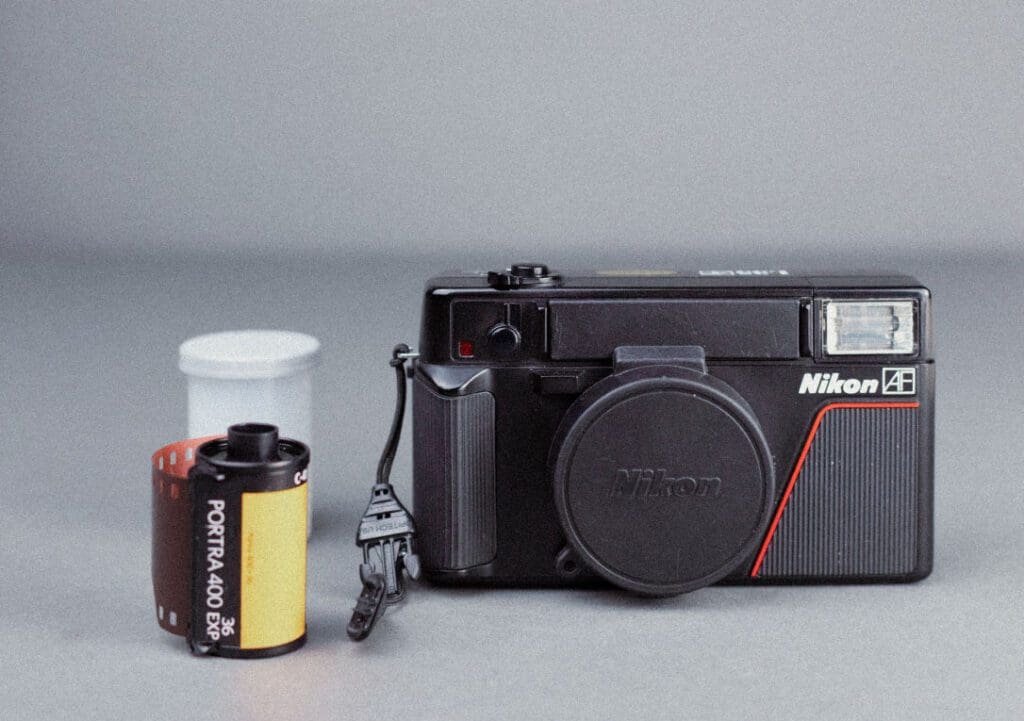
Nikon L35AF Not Your Vibe? Check These Out!
If Nikon is not your vibe, fear not! Check out these awesome alternatives that might just be your perfect match. From sleek designs to powerful features, there’s something here for every photographer looking to level up their game. Get ready to discover your new favorite camera!
- Canon AF35M: This vintage wonder from Canon Japan, also known as the Sure Shot in the USA, was the pioneer of autofocus 35mm lens-shutter compact cameras. While it may be old, noisy, and slow, pair it with high-quality films, and you’ll nail those sharp shots. Snag one for around $100 in March 2024.
- Konica C35 AF: A sleek autofocus version of the Konica C35 Automatic, boasting a fixed-aperture Hexanon 38 mm f/2.8 autofocus lens, a leaf shutter, and a built-in electronic flash. With a mechanical film advance, this beauty averages $80 depending on your location.
- Ricoh AF-5: Bulkier than its Canon and Nikon counterparts, but don’t let the size fool you – it delivers comparable results. Expect to shell out around $70 for this bad boy in March 2024.
- Pentax PC35AF: Loaded with features like a flash, self-timer, automatic exposure with manual compensation, and an infrared autofocus system, all powered by 2 AAA-size batteries. Find it on eBay for approximately $80.
- Minolta Hi-Matic AF: A blast from 1979, paving the way for modern compact film cameras. Despite lacking automatic film transport and display, its active infrared autofocus and automatic exposure make it a steal on eBay, ranging from $50 to $120.
Get ready to turn back time with these retro legends!

Final Impressions
As film shooters and enthusiasts, we’re all on the hunt for that perfect camera. And let me tell you, the Nikon L35AF? It’s been getting a lot of love lately, and rightly so. This little gem packs in some features that even premium point-and-shoots envy!
I snagged my Nikon L35AF (1000 ISO) a few years back for a cool $140 – not bad, right? But fast forward to today, and you’re looking at prices soaring sky-high on eBay. Mint condition? You might be shelling out up to $300. Yikes!
Yo, here’s a pro tip: Double-check that ISO before hitting ‘buy’.
Would I dig deep into my pockets for it now? Nope, not a chance! Why, you ask? Well, besides the eye-watering price hike, that primitive and unreliable autofocus can be a real headache. Cloudy days? Brace yourself for some serious struggles, even with steady hands. Trust me, I’ve missed more shots than I’d care to admit – thanks, autofocus!
Now, don’t get me wrong – this camera’s not exactly a bargain-bin find. But hey, it’s a solid pick for newbie shutterbugs looking to dip their toes into the world of film photography, as well as seasoned pros looking for a trusty sidekick.
So, until next time, folks! Pssst, take a quick peek at my latest post.
P.S. Got any sneaky tips or tricks up your sleeve? Drop ’em in the comments below! Let’s keep the conversation rolling.



